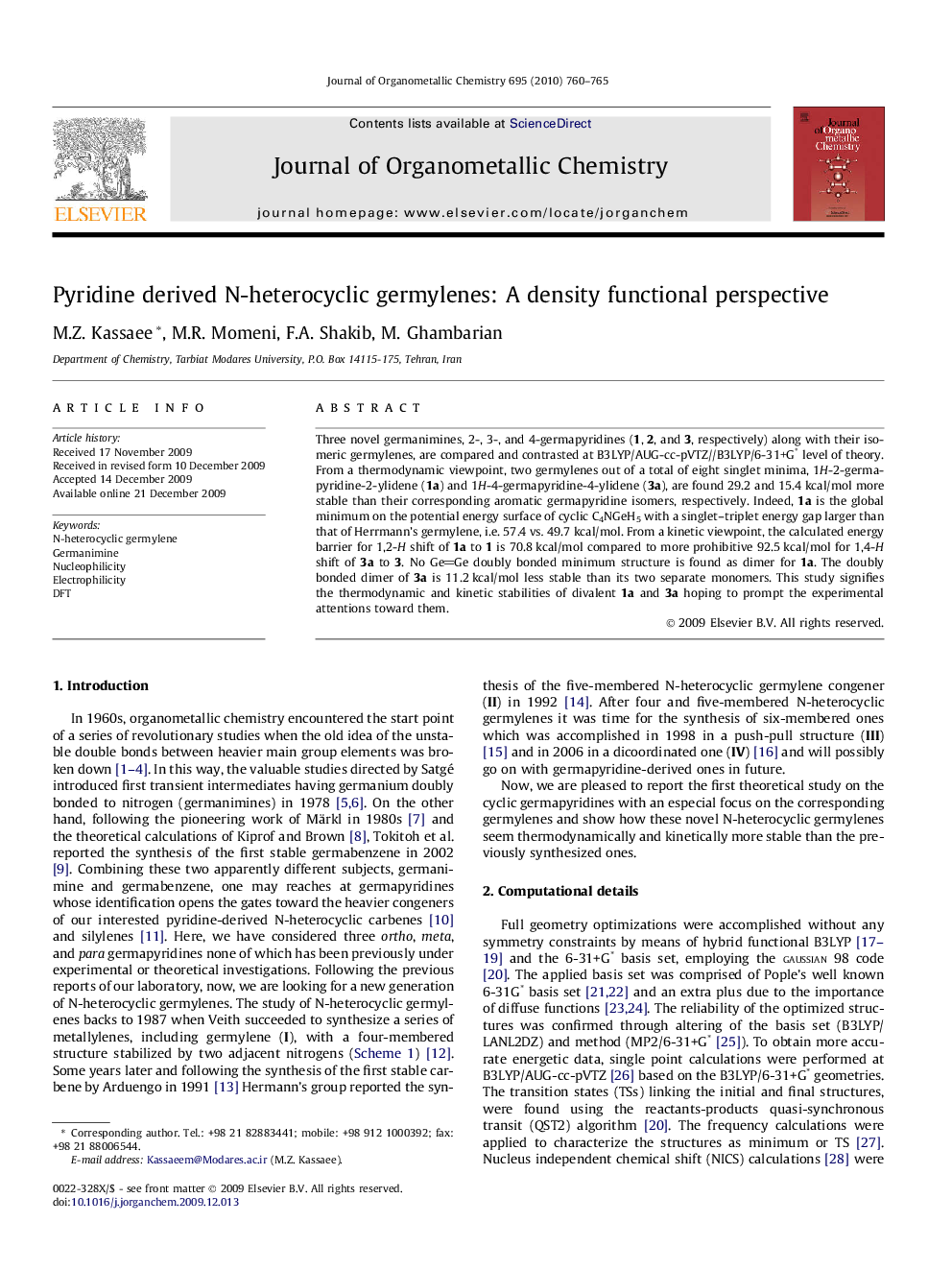| Article ID | Journal | Published Year | Pages | File Type |
|---|---|---|---|---|
| 1322674 | Journal of Organometallic Chemistry | 2010 | 6 Pages |
Three novel germanimines, 2-, 3-, and 4-germapyridines (1, 2, and 3, respectively) along with their isomeric germylenes, are compared and contrasted at B3LYP/AUG-cc-pVTZ//B3LYP/6-31+G∗ level of theory. From a thermodynamic viewpoint, two germylenes out of a total of eight singlet minima, 1H-2-germapyridine-2-ylidene (1a) and 1H-4-germapyridine-4-ylidene (3a), are found 29.2 and 15.4 kcal/mol more stable than their corresponding aromatic germapyridine isomers, respectively. Indeed, 1a is the global minimum on the potential energy surface of cyclic C4NGeH5 with a singlet–triplet energy gap larger than that of Herrmann’s germylene, i.e. 57.4 vs. 49.7 kcal/mol. From a kinetic viewpoint, the calculated energy barrier for 1,2-H shift of 1a to 1 is 70.8 kcal/mol compared to more prohibitive 92.5 kcal/mol for 1,4-H shift of 3a to 3. No GeGe doubly bonded minimum structure is found as dimer for 1a. The doubly bonded dimer of 3a is 11.2 kcal/mol less stable than its two separate monomers. This study signifies the thermodynamic and kinetic stabilities of divalent 1a and 3a hoping to prompt the experimental attentions toward them.
Graphical abstractTwo novel germylenes, 1a and 3a, are found 29.2 and 15.4 kcal/mol more stable than their corresponding aromatic germapyridine isomers. From a kinetic viewpoint, the calculated energy barrier for the 1,2-H shift of 1a to 1 is 70.8 kcal/mol compared to more prohibitive 92.5 kcal/mol for the 1,4-H shift of 3a to 3. No minimum dimer is found for 1a and that of 3a is 11.2 kcal/mol less stable than the two separate monomers.Figure optionsDownload full-size imageDownload as PowerPoint slide
